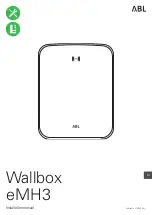
Brake pedal
WARNING
The movement of the brake pedal must
never be obstructed by a floor mat or any
other object. In case one of the two brake
circuits fails, increased pedal travel is re-
quired to bring your vehicle to a full stop.
Make sure that the size of your floor mat
does not hamper the movements of either
brake, clutch or accelerator pedals in any
way.
Secure the floor mat against sliding into posi-
tions that could interfere with the safe opera-
tion of your vehicle.
Do not "ride the brakes" by resting your foot
on the pedal when not intending to brake.
Overheating and premature wear of the
brakes will result.
Before descending a steep grade, reduce
speed and shift transmission into a lower
gear or driving position to control speed. Do
not ride the brakes or hold pedal down too
long or too often. This could cause the
brakes to get hot and not function properly.
Brake operation and brake warning light
The brake fluid warning light in the instrument
cluster comes on accompanied by the fault mes-
sage in the information system display to indi-
cate that the level in the brake fluid reservoir is
too low.
With correctly adjusted brakes, and a correctly
working brake system, the pedal travel to the
point of brake actuation should be 1-3/16" to
1-9/16" or 30 to 40 mm. Whenever the brake
pedal travel exceeds this distance, have the
brake system checked.
Keep in mind that the braking distance increases
very rapidly as the speed increases. At 60 mph
or 100 km/h, for example, it is not twice but
four times longer than at 30 mph or 50 km/h.
Tire traction is also less effective when the
roads are wet or slippery. Therefore, always
maintain a safe distance from the car in front of
you.
Brake booster
The brake booster assists braking only
when the engine is running.
When the car is moving while the engine is not
running, or if the brake booster is defective,
more pressure on the brake pedal is required to
bring the car to a halt.
Moisture or road salt on brakes affects
braking.
WARNING
Driving through water may reduce the trac-
tion. Moisture on brakes from road water,
car wash, or coating of road salt may affect
braking efficiency. Cautiously apply brakes to |
test them after being exposed to such condi-
tions. When the vehicle is driven on salted
roads for extended periods, the brakes
should be hosed down thoroughly about
every 2 weeks. An automatic carwash facility
cannot do this job properly. Brakes will dry
after a few cautious brake applications.
Brake wear
Our automobiles have excellent brakes, but they
are still subject to wear, depending on how the
brakes are used. Have the brake system in-
spected at the intervals recommended in your
Maintenance booklet.
New brake pads or linings
Brake pads or linings may not have the highest
possible braking efficiency when new. Therefore,
allow for longer braking distance during the ini-
tial 100 to 150 miles or 150 to 250 kilometers
of normal city driving if fewer stops are realized.
Make it a habit to check the operation of your
brakes before driving.
31
Summary of Contents for 928 GTS 1994
Page 1: ......
Page 2: ......
Page 44: ...Warnings displayed in response to faults 44 ...
Page 121: ...123 ...
Page 122: ...124 ...
Page 123: ...20 40 60 80 100 120 140 160 180mph 125 ...
Page 124: ...Index 127 ...
















































